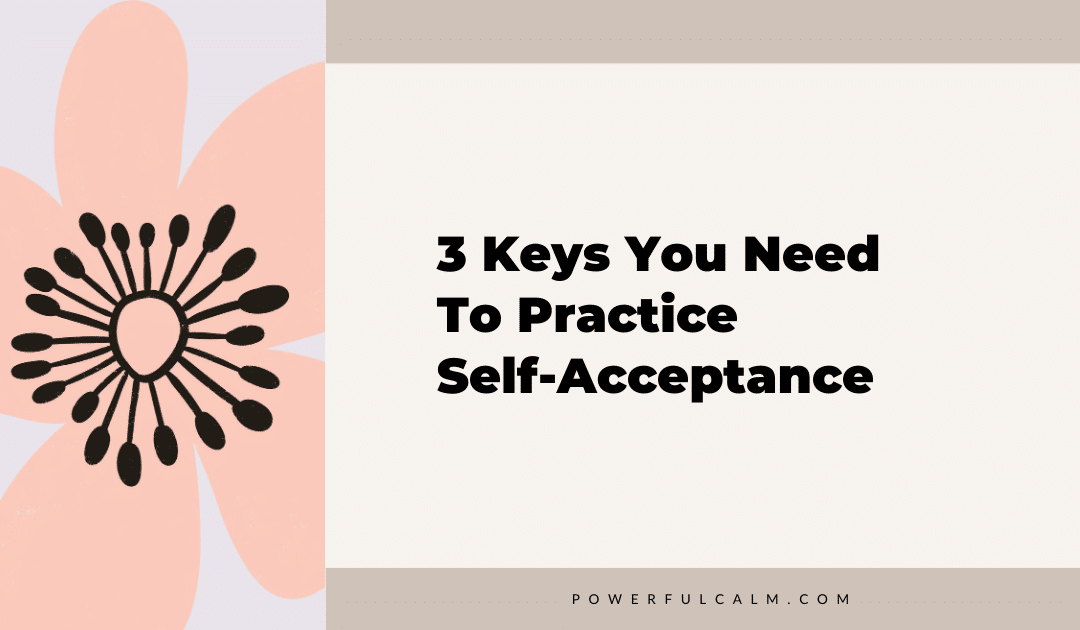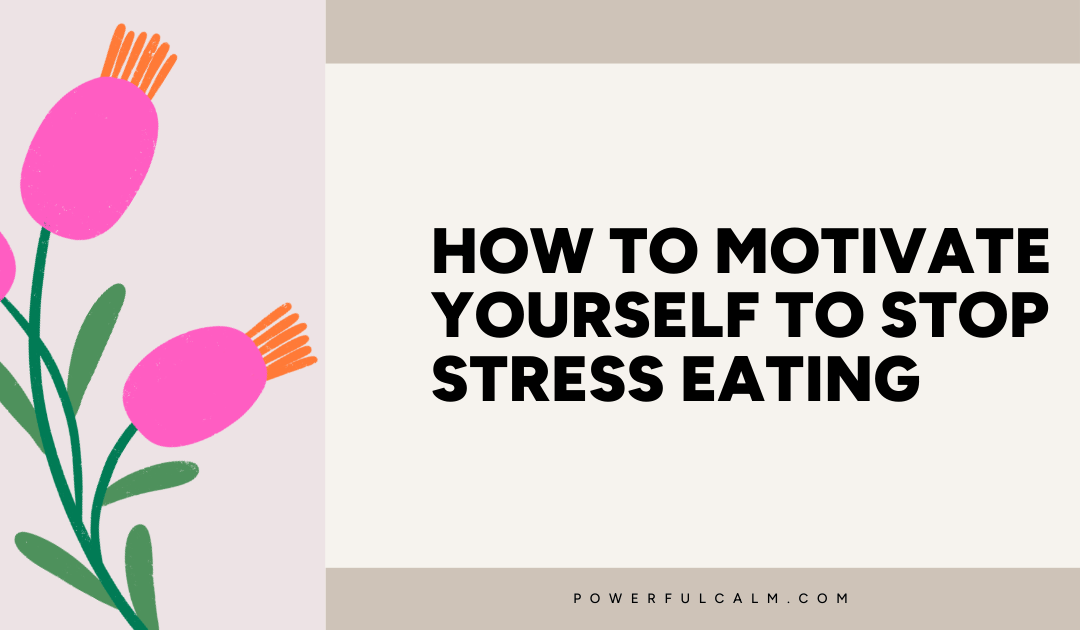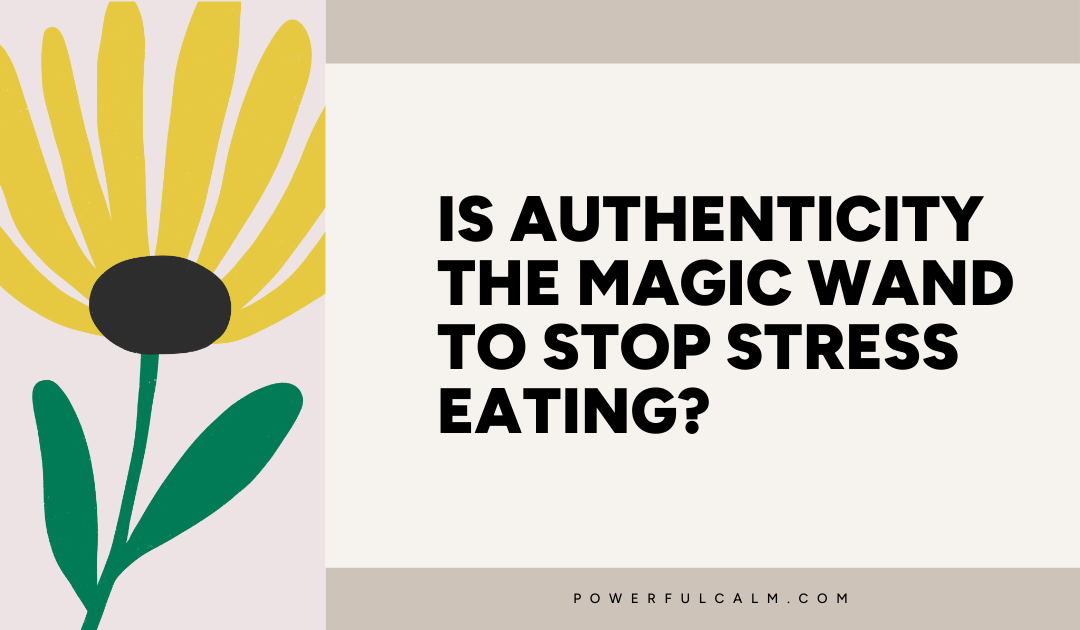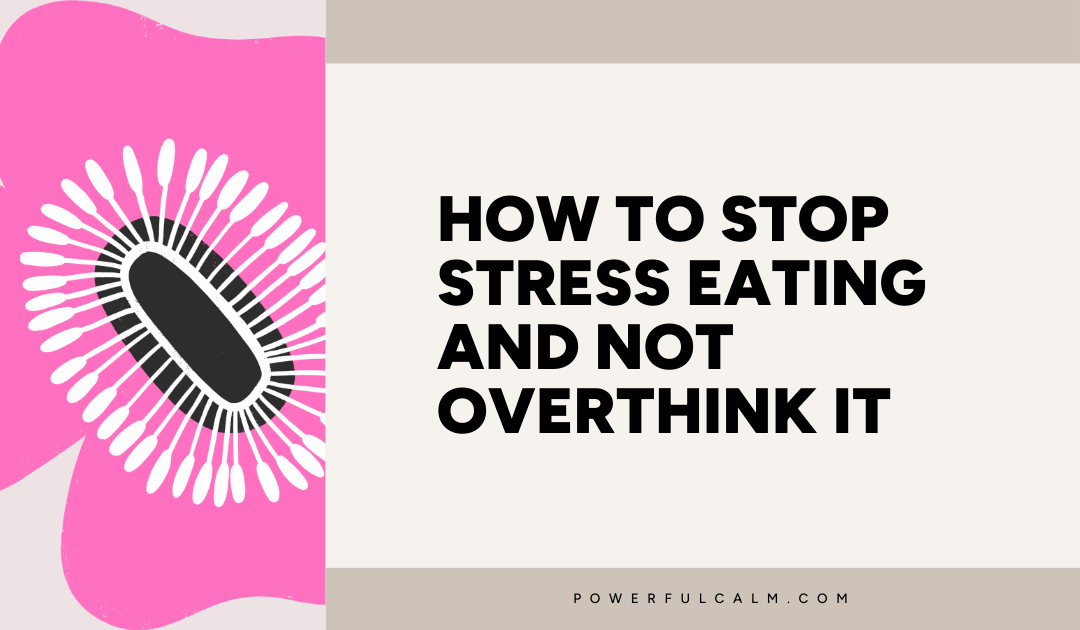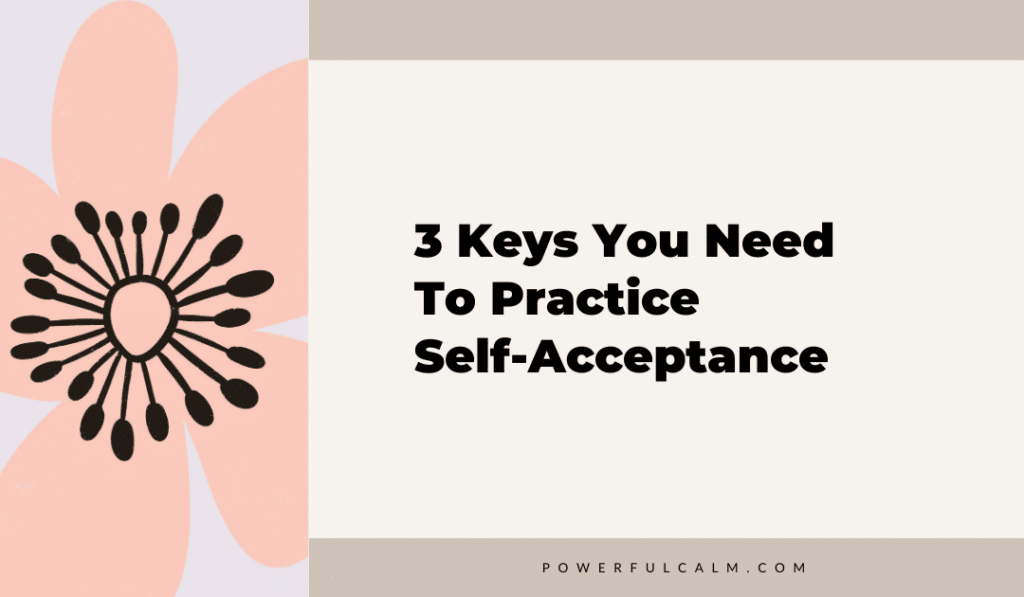
Have you heard this advice on how to practice self-acceptance?
- love yourself regardless of your body
- you need to love yourself and you’ll overcome your ‘trouble spots’ and learn to love them
- you need to (fill in the blank – work harder, practice acceptance, stop focusing on the negative, etc.) a little more
If I had a penny for every time a client has told me some version of one of the statements above…
It seems that this type of advice makes logical sense. But the problem is that it treats your body as a thing or object you can easily change. It’s like you’re a sculptor and your body is a lump of clay easily shaped, molded and manipulated.
But you’re probably not a sculptor and your body isn’t easily changed either.
The reality is that you’re more than your body. Your mind and body can’t be separated, and as much as you may try to treat your body as if you can mold it at will, the further down the road of disappointment you’ll find yourself.
Developing a self-acceptance based on calm and clarity fuels a self-relationship that moves you to what you want in life.
Although you may have a guess, it’s impossible to know what someone is thinking or what their beliefs are when they remain private.
What isn’t private is another person’s body. You might even have a judgment or two based on your observation.
The boundaries between what is okay to comment, what is okay to wear, or even the acceptable language to describe the body are unclear in modern society. Yet, all of these things do communicate something.
We see this daily from pop stars wearing costumes as bare as the censors will allow, detailed discussions of their food choices and workout play-by-plays on social media to commercials selling the idea of, “I’m so bad eating this decadently sinful treat!”
Through your body, you experience life in shape, texture, color, vibrance, pleasure and pain. When you practice self-acceptance – all of your life – the “full catastrophe,” as Zorba said in the movie Zorba the Greek, you have a fantastic chance of being happy.
Who decides what’s acceptable?
We’re also bombarded with visual and mental images of the correct, most desirable, perfect shape to strive to become. It comes from the media, family, and cultural ideas about what’s best.
The question is, who’s in charge of deciding what this should be?
It is expected to make assumptions about who’s healthy and who isn’t based on snap judgments about appearance. Sometimes, you might even do this in your thoughts about your body.
One of the challenges in modern society is figuring out how to trust your self-knowledge when so much conflicting information is available.
There are too many choices, and coming at you fast makes you feel overwhelmed and unclear.
The good news is that the process of change is directly opposite!
Lasting change takes time.
Change requires you to disconnect from your judgments and instead allow yourself to be in a state of curiosity.
The most important place to start is self-acceptance. Don’t click away; that’s not code for “let yourself off the hook.” Let me explain… there’s more than meets the eye here!
Acceptance does NOT mean:
- stagnation
- giving up your goals
- learning to love where you are right now regardless of your desire to change
Life is constantly moving and shifting and so are you. You can change your life, body, relationships, talk to yourself, and many more things at any time to practice self-acceptance.
Self-acceptance is a process.
What acceptance means will change over time as you grow. It means integrating where you are right now while focusing on the bigger goals you have for your life!
Acceptance aims to help you get from where you are today and point you toward greater consciousness and growth.
With the increased consciousness, you can thoughtfully plan with care and kindness.
The benefit is that the changes you make are more refined and speak to what you genuinely want…the possibilities are endless.
Making conscious change
Conscious change is a process that works best with a focused, step-by-step approach.
It can look like:
- learning
- integrating
- experimenting with what works or what doesn’t
- shifting and adjusting
- acclimating to the new reality
When you lose sight of the big picture where patience, kindness, and acceptance reside, you can over-focus on specific results as proof of failure rather than a step toward creating the life you want.
Immediate results would be excellent; however, what you learn about yourself in the struggle to figure it out will help you get what you need – faster!
Ask yourself this question from time to time: how has your life improved, even when you make small changes?
Conscious change allows you to focus on small changes step by step. It helps keep you motivated so you continue adjusting your actions and continually iterate, even if it takes a while.
How people change
In the past 30 years or so, much research and development has been published about change, the process of change and what motivates people to change.
The Transtheoretical Model of Change was founded by James Prochaska and Carlo DiClemente (for more information, look here) and is systematically and practically applied with Motivational Interviewing, founded by William Miller and Stephen Rollnick (for more information, look here).
The Model of Change, while initially used to understand how to help people struggling with substance abuse stay on the road to recovery, has been expanded. Professionals in health, business, conflict resolution, etc., also find the stages helpful to understand how people make changes and what helps at each stage of change to stay on course.
For most people struggling with stress eating—those who have dieted and dieted and dieted and want to get off that particular merry-go-round—the insights about how people decide to change and what is necessary to pivot in another direction are helpful. Self-acceptance is a big part of it (for more information on the decision to change, look here).
Truly looking in the mirror and being transparent with where you are right now free you from evaluation and judgment so you can practice self-acceptance and make the change you need in your life.
There are three ways to do this – Knowing, Consciousness and Peace.
1. Knowing
You know that you have to do something differently for things to change and it’s painful to go through the process.
It’s complicated when you want things to change, whether it’s for your body to be different, your relationship with food to be different, or to feel like you can be present in the moment so you can change things.
A question that helps to narrow the focus is:
What is the most concrete thing that will lead to results you can see, feel, experience, and trust your self-knowledge so that you can practice self-acceptance?
Often, the answer reverts to a quick fix like a diet. “Six weeks to bikini ready” or “do this cleanse and break free from sugar cravings.” It’s enticing but not sustainable.
Ultimately, you know that these tactics don’t lead to long-term change. You want freedom from stress, stress eating, and burnout.
It’s a challenge to keep moving forward when the path is unsure and the changes you experience are ones you only feel from the inside.
Acceptance is the path to a long-term transformation of your relationship with your body, allowing yourself to begin where you are each day and keep moving forward.
2. Consciousness
Recognize where you are in the change process and decide to take action.
It takes grit to stay the course of the slow road to change.
If stress eating is what you want to change, every time you log on to social media, go to the grocery store, or even have lunch with a friend, you will be reminded that the process you have decided is best for you and it takes patience with yourself to stay on track.
Trust the process, notice how you’re different today than yesterday and celebrate your success by honoring yourself – moment by moment.
You are learning what you need to fuel your mind, body, and heart for the rest of your life.
3. Peace
Find what works for you and be confident in your changes so you can live with peace of mind.
Freedom is knowing that you’re in control of your life.
You can reach a point where you no longer unconsciously give your power away.
When you treat yourself with respect and love, you can open yourself up and getting stuck on short-term results becomes a thing of the past, and you can practice self-acceptance.
Self-acceptance is caring for yourself with kindness, love, and compassion.
Kindness is the pathway toward change.
Compassion is the fuel for a more peaceful and fulfilling life.
Self-acceptance ultimately leads to more self-love.
Conclusion
For too long, women, in particular, have accepted that feeling poorly about their bodies and disappointment in their lives is the norm. The implication that women should accept being unhappy is madness!
If you can take the leap of faith—that love, kindness and compassion are the fuel that will help you change and support you to be where you want to be in life—then you already have a robust and supportive foundation to accept yourself and live the joyful life you want!
